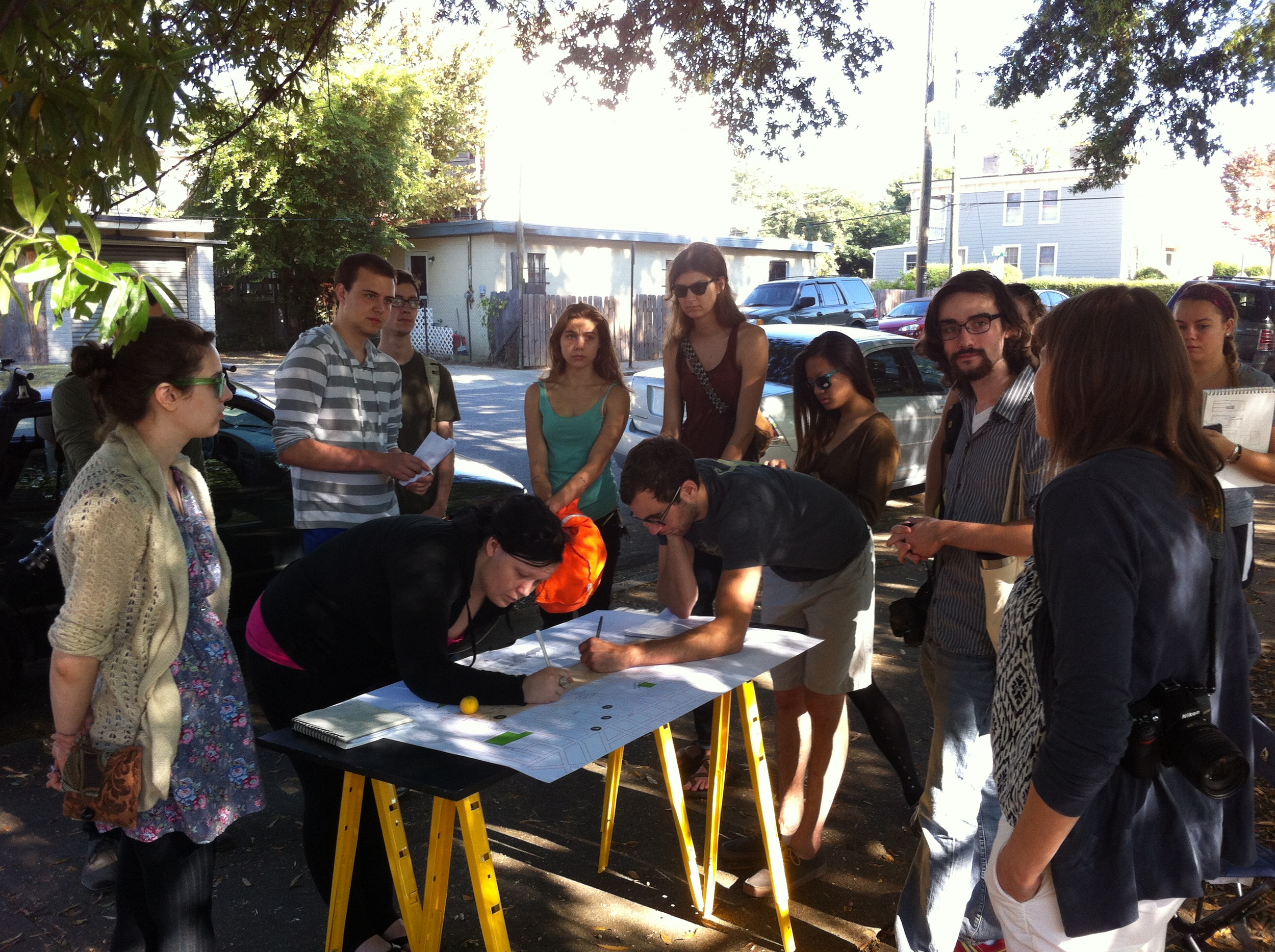tricycle gardens
fresh produce on display in Church Hill convenience store
community garden in church hill
From informal sidewalk interviews:
Person A does not think there is local food around Church Hill.
Person B does think there is local food (at tricycle gardens ).
Brooke Chornyak teaches systems in graphic design at VCU, and spends a lot of time teaching food systems. Her premise, that one can learn graphic design by studying food, relies on consistent principles shared among all systems, and on the idea that the familiarity we have for food systems can effectively teach these consistent system principles, and can instill curiosity in general. All of which is important for the emerging designer because "the complexity and scale of today's design problems needs design practitioners with insightful research methods. . . Designers now and increasingly will be asked to collaborate with social policy advocates and anthropologists, cognitive psychologists, governmental and business leaders" (gdes 343 syllabus)
A few weeks ago, I helped lead a workshop with Brooke's class on food systems, local food, and understanding food in urban settings. In a 20-block area of the Church Hill neighborhood in Richmond, VA, the class explored the presence of food in the city through photographs, mappings, interviews, and discussion. We talked about socially-driven design, about how systems can become stable and resilient or brittle and fragile. We read a thought-provoking interview with Sarah Rich and Nicola Twilley about food, cities, and design. We had a long talk about what local food actually is.
This is the students' brainstormed list of what local food is, on the course's tmblr. This is the flickr site they've set up to collect their Church Hill food photographs.
We went out and spent a morning in the Church Hill neighborhood, which I'd only visited the day before. The students were tasked with surveying the physical neighborhood, looking for food, any kind of food, any evidence of food. They were asked to photograph what they saw, and locate on a large map what they found. They were also asked to interview people they encountered along the way, revealing widely divergent perspectives on food in Church Hill. The area and its food assets were new territory for most of us. I enjoyed getting to know the urban fabric there, reading the apparent shifts in economy and culture typical of transitioning neighborhoods, but seeing a flavor of Southern historicism that is probably unique to Richmond, and maybe to just this neighborhood.
So what about local food, then? We found some in Church Hill. How can local food relate back to systems, and inform the teaching of designers?
If we're talking about systems as way to teach graphic design, then, doesn't the question of local lead away from the underlying logic in systems? Doesn't the idea of local food, instead of teaching about universal systems behavior, take on us on a tangential exercise further and further from stocks and flows, from formal patterns and rules, and the real meat of systems thinking?
Well of course it does. Talking about local in food isn't like talking about graphic design's formal systems, and talking about local in food isn't equivalent to talking about the food system's formal rules. Local food is about interaction and performance, is about the subject-object relationship that every designer realizes. Talking about local food is like talking about the user or the audience in design. Framing food as local can reorient the entire food system into a relationship with a person, a family, an actual place on the map. The local that matters 'here' is different from the local defined by 'over there.' Knowing that location, situation, and context are all part of the local food experience can teach amazing lessons for designers. When a design student describes local food as: "only interactive, meaning (that) I have a relationship with those that grew or produced the food", then that designer is capable of forming a relationship with the user of their designs, and capable of valuing the individual, particular, human experience.
Local food is a relational idea. Local food leads to systems that make a difference.









